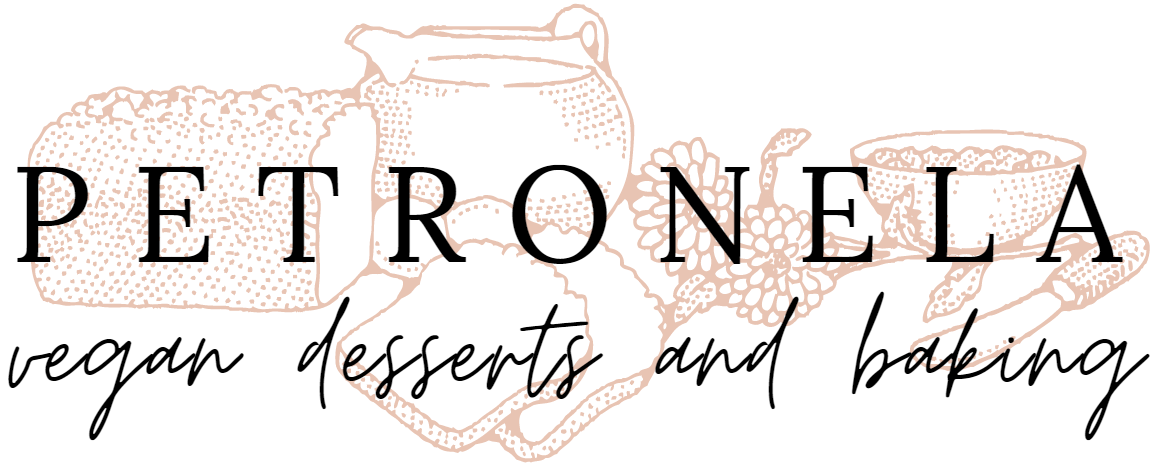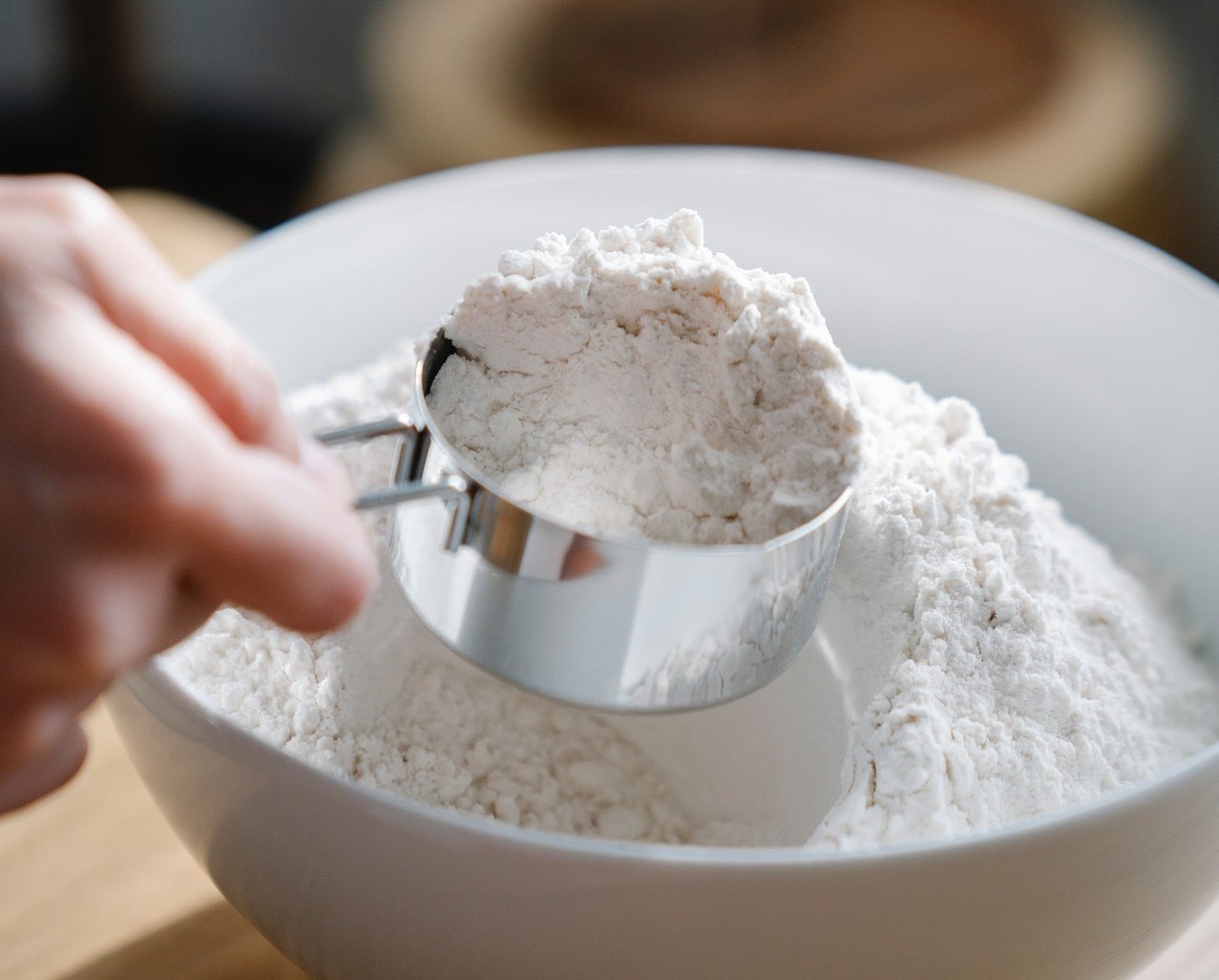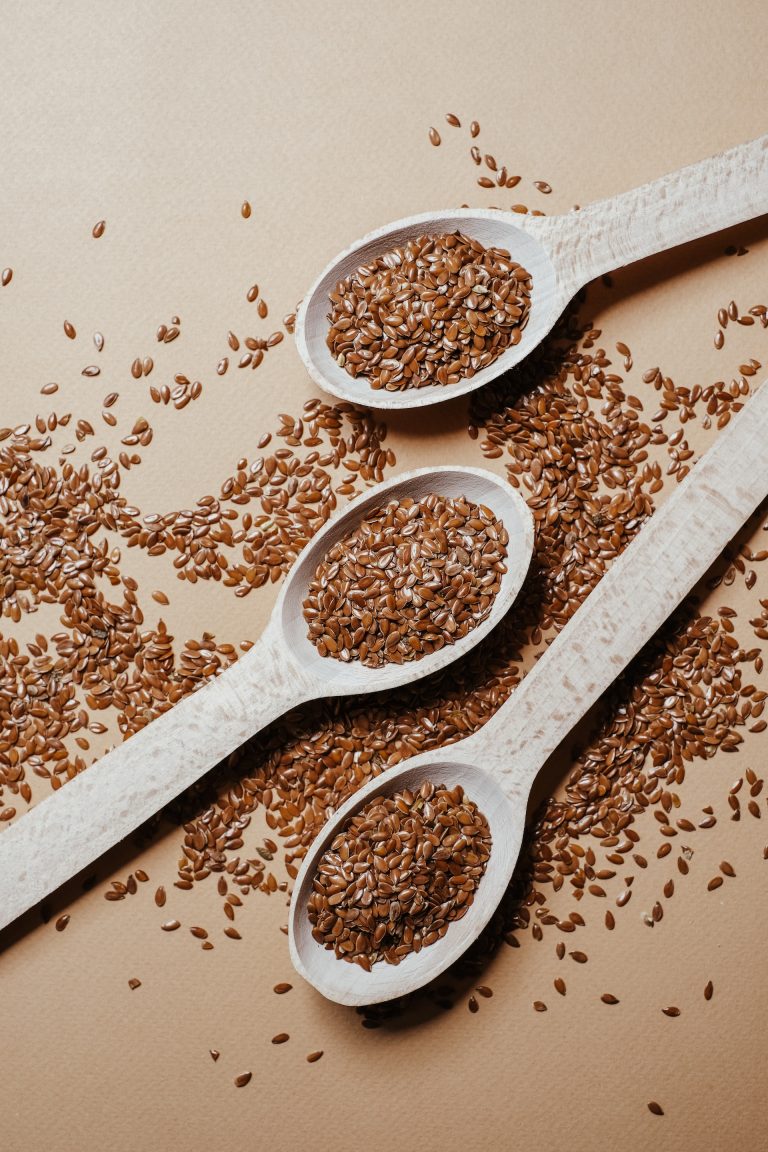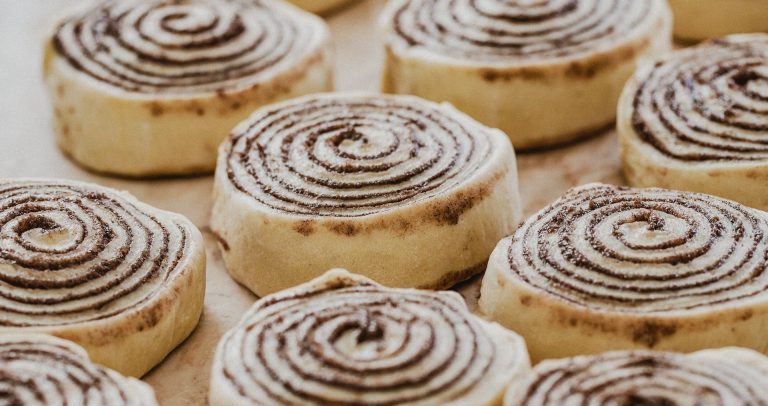It’s common for recipes to be measured in cups or deciliters, but I always stick to grams. Let me explain why!
I choose to bake with grams partly because it’s what I used growing up, but also because it’s much more accurate to weigh your ingredients than to use cups or deciliters.
The problem with measuring cups
Baking is a science, and it’s very easy to get completely incorrect measurements when using cups. A lot of people are unfamiliar with the “correct” way to use them, specifically when measuring dry ingredients, which is to use a spoon to scoop the ingredient into the measuring cup, then level it of with a flat knife.
Unfortunately, a lot of people tend to just stick the cup into a bag of flour, or whatever they’re measuring, and shake off the excess to level it off.
The problem with this method is that the ingredients get easily pressed down into the measuring cup, meaning that you can fit more into it, and end up with more than the recipe calls for.
This is particularly true when measuring something like flour or other powdered ingredients, and it can completely mess up the end results.
Grams are easier to measure
I also prefer to use grams simply because I think it’s easier, both when making a recipe and when developing one. Because to perfect a recipe, you often need to adjust the ingredients a very small amount, so it’s easier to say “125 grams” than “1/2 cup and 2 teaspoons” etc.
All you need is a standard kitchen scale, which can be found very cheap online, and maybe a pair of batteries if that’s how your scales operate – and you’re good to go!
Another plus is that there’s less clean-up, since you only dirty the bowl you’re mixing in, and possible a teaspoon or tablespoon.
Small measurements are an exception
I’ve chosen to stick to grams for the most part, except when it comes to teaspoon and tablespoon measurements.
This is because when it comes to these small measurements, there is a very small difference between a “packed” teaspoon, and a “spooned and leveled” teaspoon, that for the most part, it won’t make a difference.
I’ve also noticed that when it comes to kitchen scales, some of them will have trouble registering an ingredient that weighs less than five grams.
This isn’t an issue when going from say, 100 grams to 105 grams, but for some reason it’s sometimes tricky for certain scales to go from 0 grams to 5 grams.
Measuring wet ingredients
Obviously, you can’t “pack” a cup of liquid. So it’s completely fine to use measuring cups for wet ingredients.
But since one milliliter of liquid like milk or water weighs one gram, they’re pretty interchangeable.
Unfortunately, fats like oil weigh slightly less, as 100ml weight approximately 95 grams, so it isn’t as accurate. Keep this in mind if you’re changing a recipe from cups or millileters to grams!
It’s up to you
At the end of the day, it’s up to you whether you want to use grams or measuring cups when baking.
I like to use precise measurements not only because it makes the process of perfecting a recipe easier and more precise, but also to ensure that you get the most reliable and best possible results when using my recipes.
If you don’t own a kitchen scale, I highly recommend you purchase one, but if you still prefer to use cups in baking, I hope you find an amazing recipe that you love from someone else!




